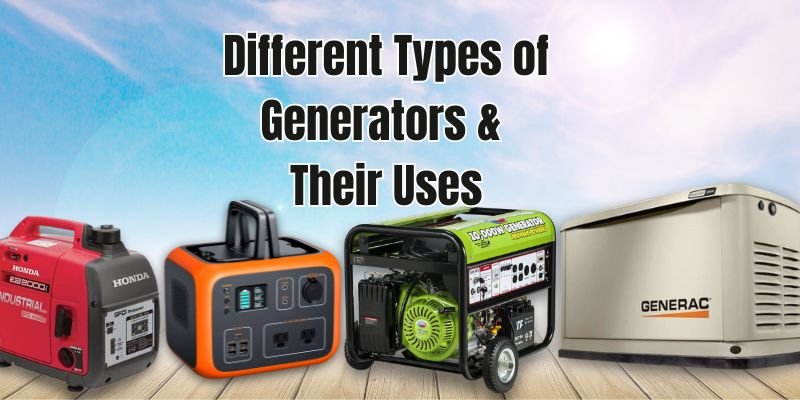Disclosure: This post contains affiliate links and I will be compensated if you make a purchase after clicking through my links. Learn More
To fix an overloaded generator, reduce the load by unplugging non-essential devices. Reset the generator and monitor its performance.
Generators are vital for providing backup power during outages. An overloaded generator can lead to serious damage and operational issues. Understanding how to fix an overloaded generator ensures it operates efficiently and safely. First, identify which devices are consuming the most power.
Unplug any non-essential items to reduce the load. Next, reset the generator to clear any error codes. Regularly monitor the generator’s performance and load capacity. This proactive approach helps prevent future overloads and extends the life of your generator. Proper maintenance and load management are key to reliable generator operation.
Identifying Overload Symptoms
Generators are crucial during power outages. But, they can become overloaded. Identifying overload symptoms helps you fix issues early. Recognize these signs to ensure your generator runs smoothly.
Power Fluctuations
Power fluctuations indicate an overloaded generator. Lights flicker, and appliances may stop working. This happens due to insufficient power supply. Check if the generator’s output matches the load. If the generator struggles, it’s likely overloaded.
Unusual Noises
Generators should run smoothly. Unusual noises are a red flag. Grinding, knocking, or whining sounds suggest a problem. These noises often point to an overload. Listen closely to your generator. Regular noise means it’s working fine. Unusual sounds need immediate attention.

Safety Precautions
Fixing an overloaded generator requires careful attention. The first step is to follow safety precautions. This ensures that you and your equipment stay safe. Read on to learn the key steps.
Turn Off The Generator
Before making any adjustments, always turn off the generator. This prevents accidental shocks or burns. Locate the power switch and turn it to the “Off” position. Wait for the generator to cool down. This usually takes a few minutes. Once it is cool, you can proceed with other tasks.
Wear Protective Gear
Always wear protective gear when handling a generator. This includes gloves, goggles, and sturdy clothing. Gloves protect your hands from sharp edges. Goggles shield your eyes from debris. Sturdy clothing covers exposed skin and reduces risk. Here’s a simple table to guide you:
| Protective Gear | Purpose |
|---|---|
| Gloves | Protect hands from sharp edges |
| Goggles | Shield eyes from debris |
| Sturdy Clothing | Cover exposed skin |
Make sure your protective gear fits well. Loose gear can get caught in machinery. Tight gear can restrict movement and be uncomfortable. Proper fit ensures safety and comfort.
Keep A Safe Distance
Always maintain a safe distance from the generator. Ensure that others are aware of the safety zone. This minimizes the risk of accidents and injuries.
Following these safety precautions will help you fix an overloaded generator safely. Remember, safety first!
Checking The Load Capacity
To fix an overloaded generator, first check the load capacity. This step ensures your generator runs smoothly without issues. Understanding load capacity helps prevent future overloads.
Read The Manual
The first step is to read the manual. The manual provides specific details about your generator’s capacity. Look for the section that lists the maximum wattage. This number is crucial for avoiding overloads.
Here’s what you should look for in the manual:
- Maximum wattage
- Continuous running wattage
- Surge wattage
Knowing these numbers helps you manage your generator’s load effectively.
Calculate Total Load
Next, calculate the total load of all connected devices. Add up the wattage of each device using the generator. Here’s a simple way to do it:
| Device | Wattage |
|---|---|
| Light Bulb | 60W |
| Refrigerator | 700W |
| Microwave | 1000W |
Use this formula for a quick calculation:
Total Load = Sum of all device wattages
Ensure the total load does not exceed your generator’s capacity. This prevents overloads and keeps your generator safe.

Unplugging Non-essential Devices
Overloaded generators can be a major hassle. One of the simplest solutions is to unplug non-essential devices. This step can help you manage the load on your generator and prevent potential damage.
Prioritize Devices
To start, list all devices connected to the generator. Identify which ones are essential and which ones are non-essential.
- Essential devices: Refrigerator, lights, medical equipment.
- Non-essential devices: Gaming consoles, extra lamps, decorative items.
Only keep the essential devices plugged in. This ensures your generator can handle the load.
Reduce Load Gradually
Do not unplug all non-essential devices at once. Instead, reduce the load gradually.
- Unplug one non-essential device.
- Check if the generator is still overloaded.
- Repeat until the overload is resolved.
This method prevents sudden changes in the generator’s load. It helps maintain its stability.
Inspecting For Damages
Is your generator overloaded and not working properly? Inspecting for damages is crucial. This helps identify problems quickly and ensures safety. Follow these steps to inspect for damages effectively.
Check Cables
First, check cables. Ensure all cables are firmly connected. Loose cables can cause problems. Look for frayed or cut wires. Replace any damaged cables immediately.
Inspect the plug connections. They should be tight and secure. Loose plugs can lead to power loss. Also, check for any corrosion on connectors. Clean them if needed.
Look For Burn Marks
Next, look for burn marks. Burn marks indicate overheating or short circuits. Check around the generator’s outlets and connections. Burn marks can be a sign of serious issues.
If you find any, stop using the generator. Seek professional help right away. It’s important to address burn marks to prevent further damage.

Resetting The Generator
Resetting the generator is often the first step to fix an overload issue. This simple procedure can save you from costly repairs. Let’s explore how to reset your generator effectively.
Locate Reset Button
The first step is to find the reset button on your generator. This button is usually red or black. Check the user manual for its exact location.
If you can’t find the manual, look near the control panel. Many generators have the reset button there. Ensure the generator is off before you proceed.
Follow Reset Procedure
Once you locate the button, press and hold it. Hold it for about 10 seconds. This will reset the generator’s settings.
After releasing the button, wait for a few seconds. Turn the generator back on. Check if it’s functioning properly.
If the generator is still overloaded, repeat the process. If the problem persists, consult a professional. Always prioritize safety when working with generators.
Testing The Generator
After fixing an overloaded generator, it’s crucial to test it. This ensures everything works correctly. Follow these steps to test your generator safely and effectively.
Reconnect Devices
Start by reconnecting your devices one by one. Plug in the most important device first. Wait a few seconds to see if the generator handles the load.
- Reconnect the refrigerator.
- Reconnect the lights.
- Reconnect the microwave.
If the generator handles these devices well, proceed to the next step. If it struggles, you may need to reduce the load.
Monitor Performance
Once all devices are connected, monitor the generator’s performance. Check for unusual noises or vibrations. Ensure the generator runs smoothly without interruptions.
| Indicator | Normal | Abnormal |
|---|---|---|
| Noise | Steady hum | Loud clanking |
| Vibration | Minimal | Severe shaking |
| Output | Consistent power | Flickering lights |
If you observe any abnormal signs, shut down the generator immediately. Investigate the issue before continuing. Ensuring the generator runs smoothly prevents future overloads.
Preventing Future Overloads
Fixing an overloaded generator is important. Preventing future overloads is even better. Here are some tips to help keep your generator running smoothly.
Regular Maintenance
Regular maintenance is key. Follow these steps to ensure your generator stays in top condition:
- Check Oil Levels: Always check oil levels before use.
- Inspect Air Filters: Clean or replace dirty air filters.
- Examine Spark Plugs: Ensure spark plugs are clean and functional.
- Test Battery: Check the battery and charge if needed.
A well-maintained generator will last longer and run better.
Load Management Tips
Managing the load on your generator prevents overloads. Follow these tips:
- Create a Load List: List all devices you plan to power.
- Calculate Power Needs: Add up the wattage of all devices.
- Avoid Surges: Start with the largest device first.
- Use Power Strips: Distribute the load using power strips.
Load management ensures your generator runs efficiently.
Frequently Asked Questions
How Can I Identify An Overloaded Generator?
Check for signs like frequent tripping, unusual noises, or dimming lights. These indicate overloading issues.
What Causes A Generator To Overload?
Overloading happens due to connecting too many devices or high-power equipment. Always check the generator’s capacity.
How To Safely Reduce Generator Load?
Disconnect non-essential devices. Prioritize critical equipment to balance the load and prevent overload.
Can Overloading Damage My Generator?
Yes, overloading can cause overheating, damage internal components, and reduce the generator’s lifespan. Always avoid exceeding capacity.
Final Words
Fixing an overloaded generator requires careful steps to ensure safety and efficiency. Regular maintenance can prevent most issues. Always follow manufacturer guidelines for proper use. Addressing problems early can save time and money. With these tips, you can keep your generator running smoothly and avoid costly repairs.


